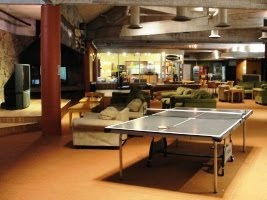"We have record snow accumulations, and a park that doesn’t stay the same for more than a couple weeks which is my favorite part about of this resort.-- Bear Mountain Blog, February 20 2010
The set-up changes so much that it’s like you get to ride a new resort every week. There’s nothing worse that hitting the same rails and boxes, week after week, month after month.
No need to worry though, you’ll never know what that’s like as long as you ride Bear."
When I read that quote on Bear's website one morning, I couldn't help but remember the times I'd been right on the cusp of landing a trick only to be disappointed the next day when the feature was nowhere to be found.
Of course once I got a taste of whatever replaced it things were quickly forgotten, but you have to wonder can there possibly be a downside to riding a park layout that constantly changes?
When features are left unchanged and consistent you open the doors for creativity at all levels; it doesn't matter if you are a beginner to an advanced rider, hitting the same rail over and over lets you progressively learn tricks.
A new rider can start with one basic trick, land it over and over, then look to familiarity with the feature for the confidence to push forward with another. A feature that never moves leaves very few surprises.
That means while advanced riders may have all of the tricks, they'll have to rely on imagination and their sharpened skills to create new variations that keep a stagnant rail fresh and poppin'.
On the other hand new features inspire trick consistency. Now, nobody wants to be that guy that only does one trick, but for an intermediate rider with even just a few tricks under his belt, any changes to the park are an opportunity to get those tricks fully dialed. Even an advanced rider is going to find kinks in tricks he thought were bagged; you could say keeping the park fresh promotes mastery.
If feature consistency aids progression, and park change-ups mastery, then the logical thing to do is maintain a touch of both. Resorts like Bear Mountain already do this:
Their basic features, commonly known as beginner parks, are left almost untouched throughout the season. Meanwhile their more advanced features are moved around piece by piece to give more experienced riders their "old-faithfuls" along with plenty of variety.
In the end I suppose just as in life, sometimes things change for the better and sometimes they change for the worse; it all depends on what trick you were you close to landing beforehand...






















